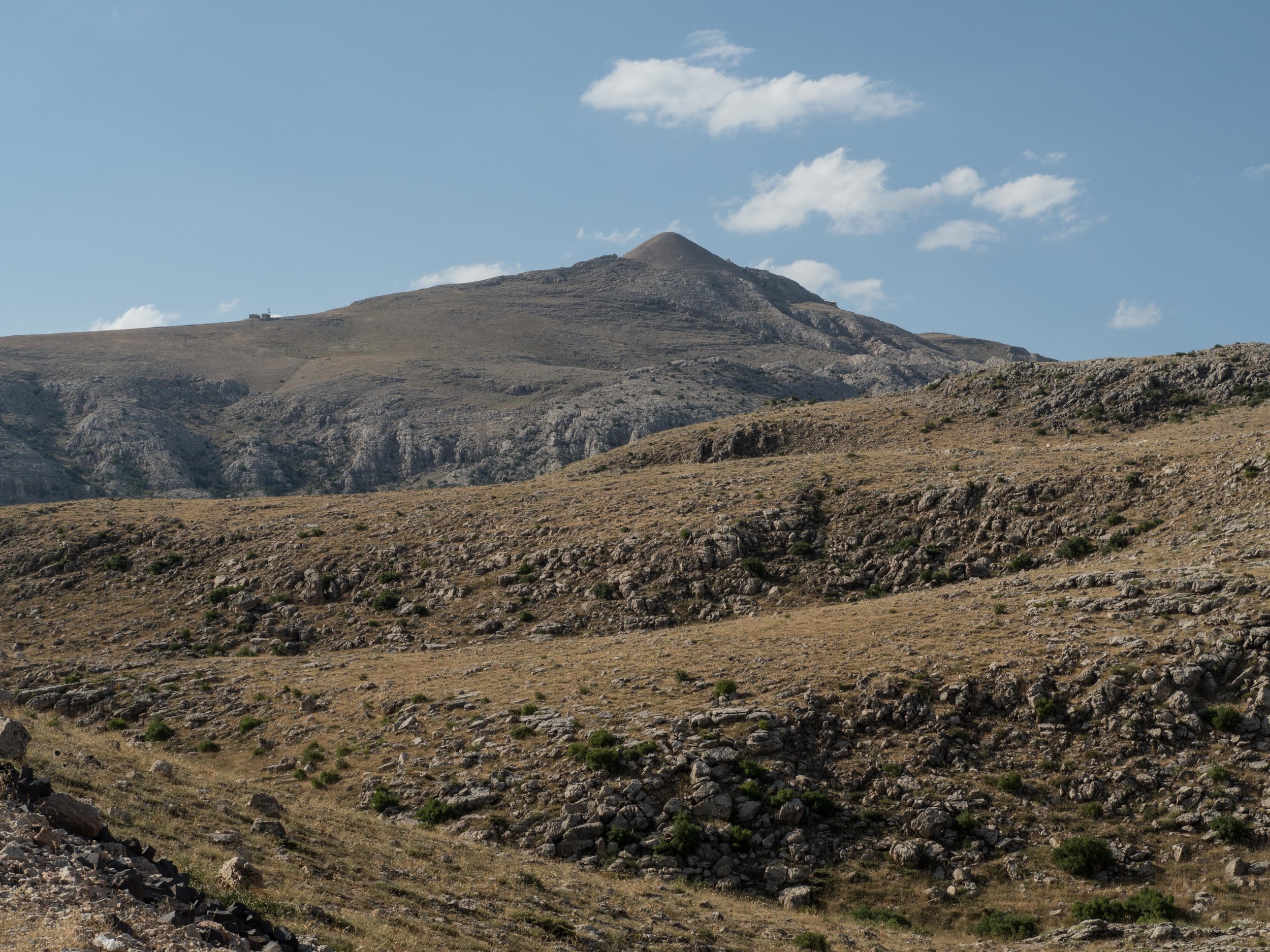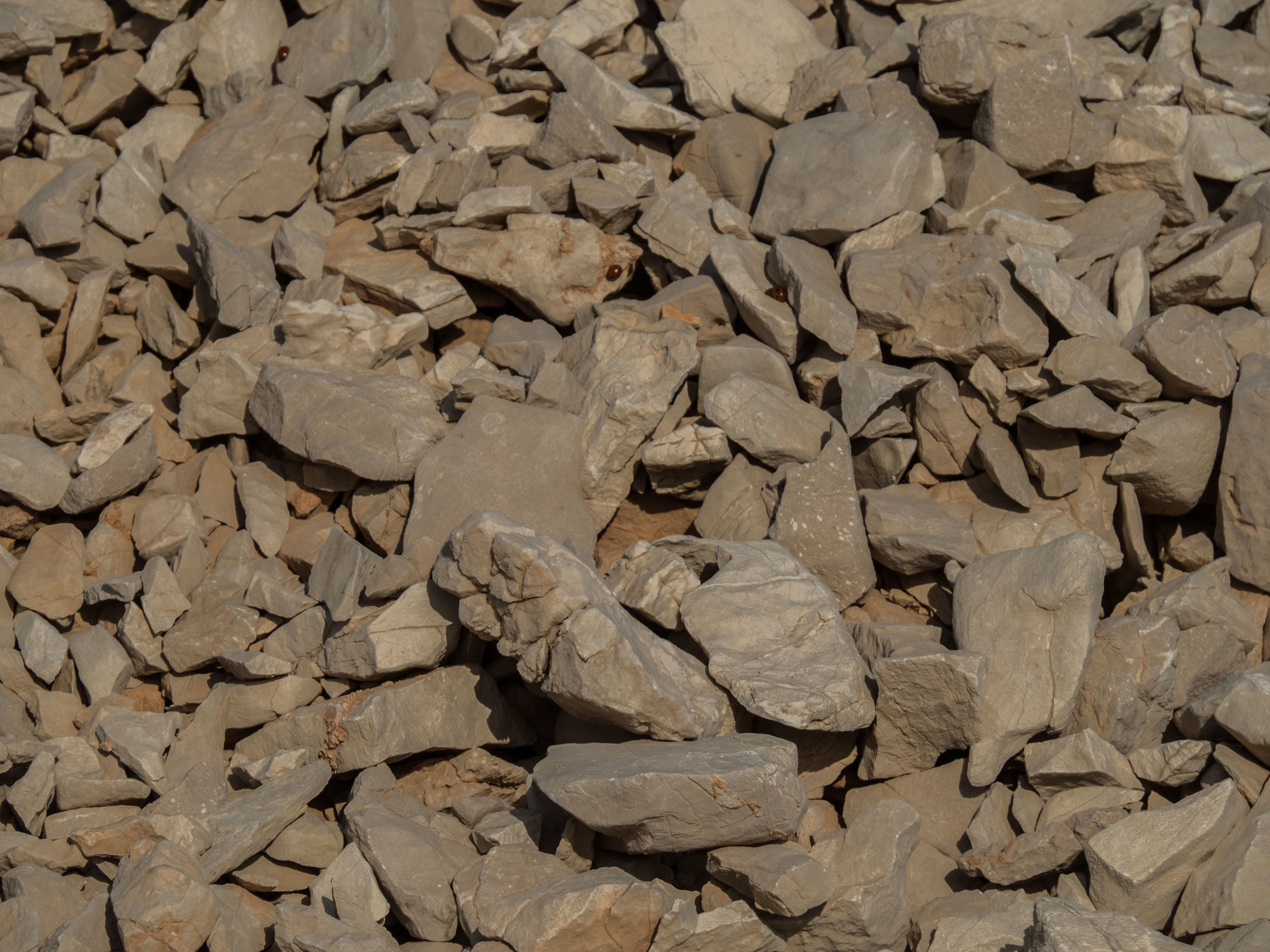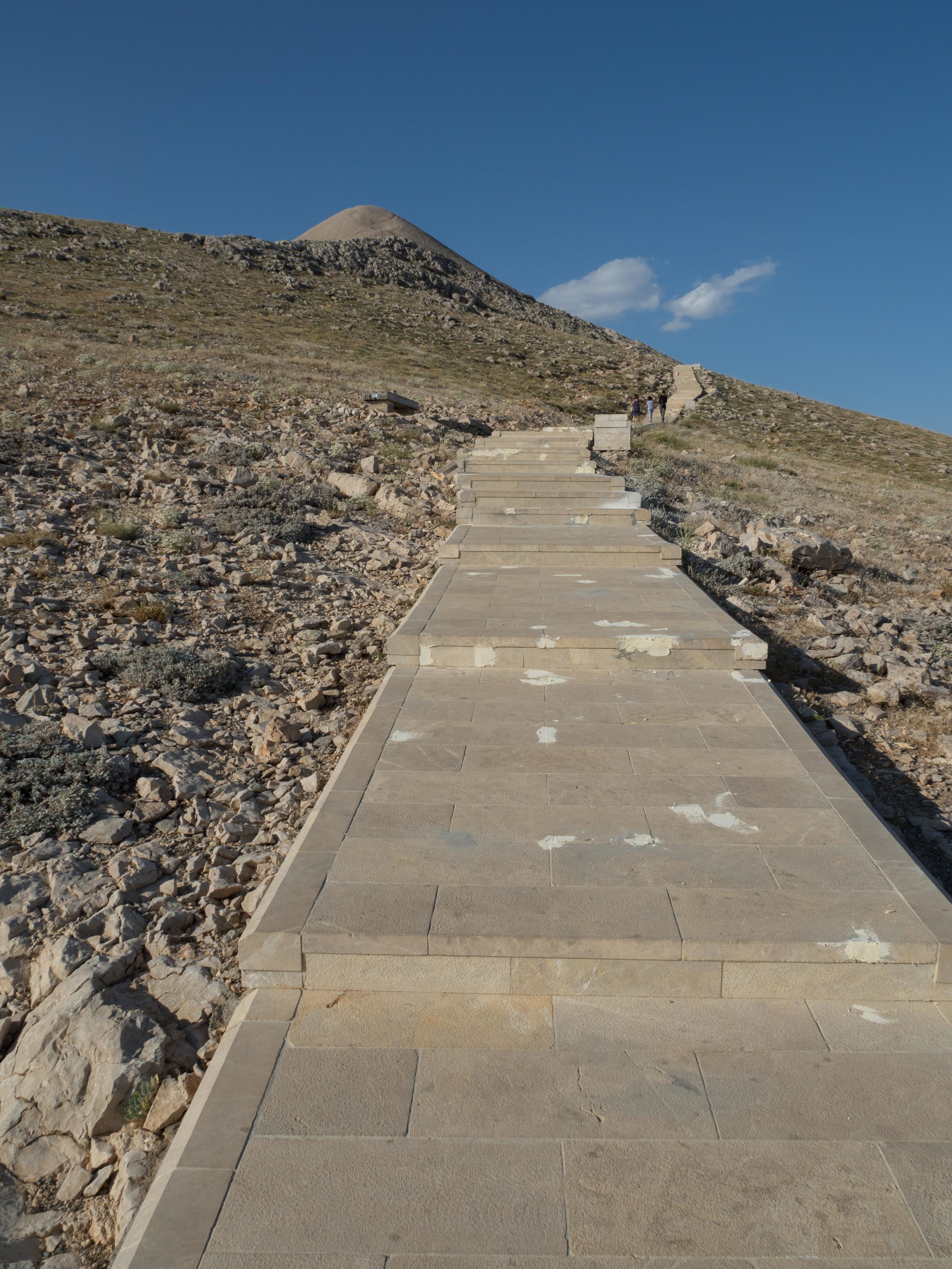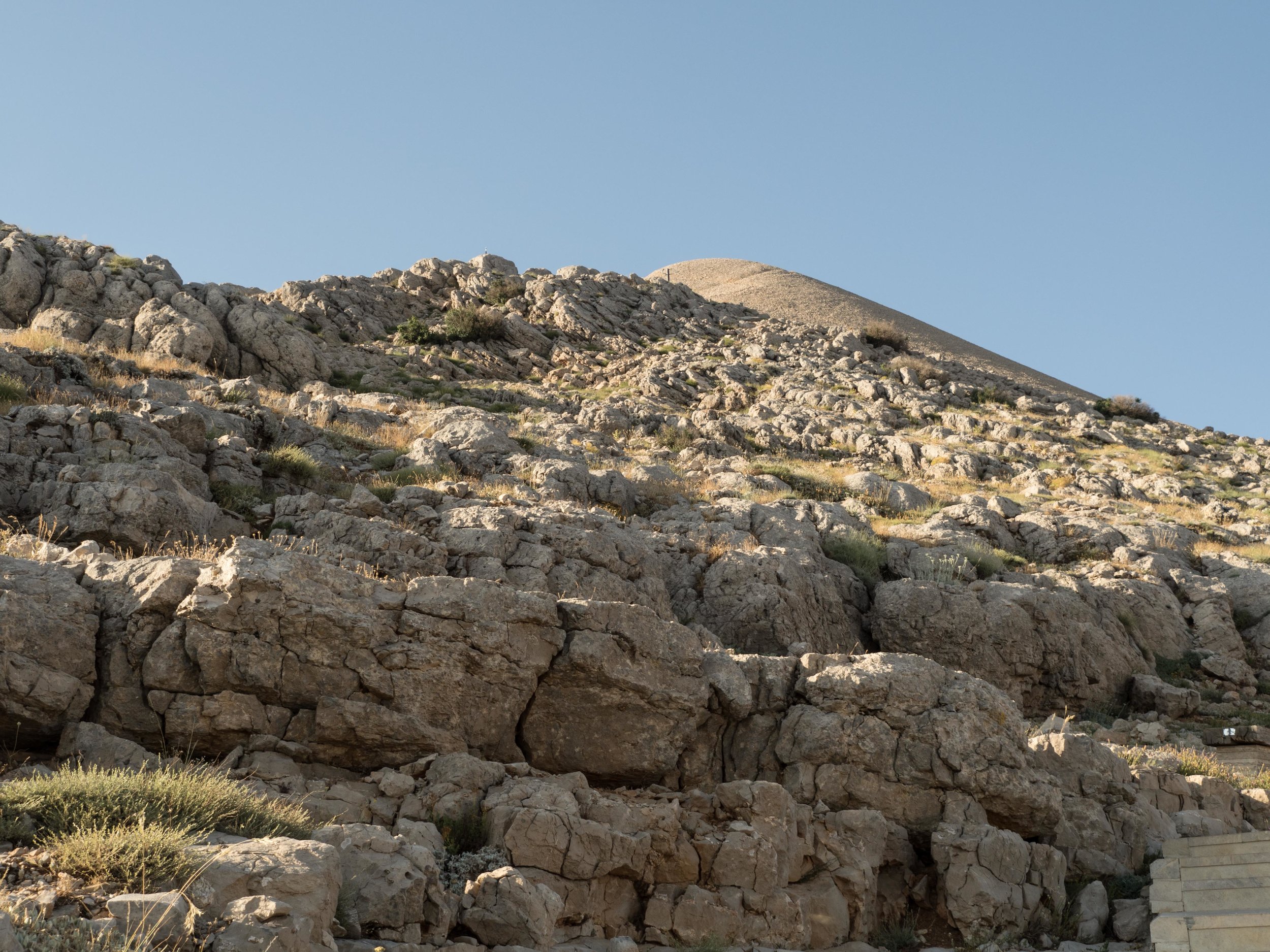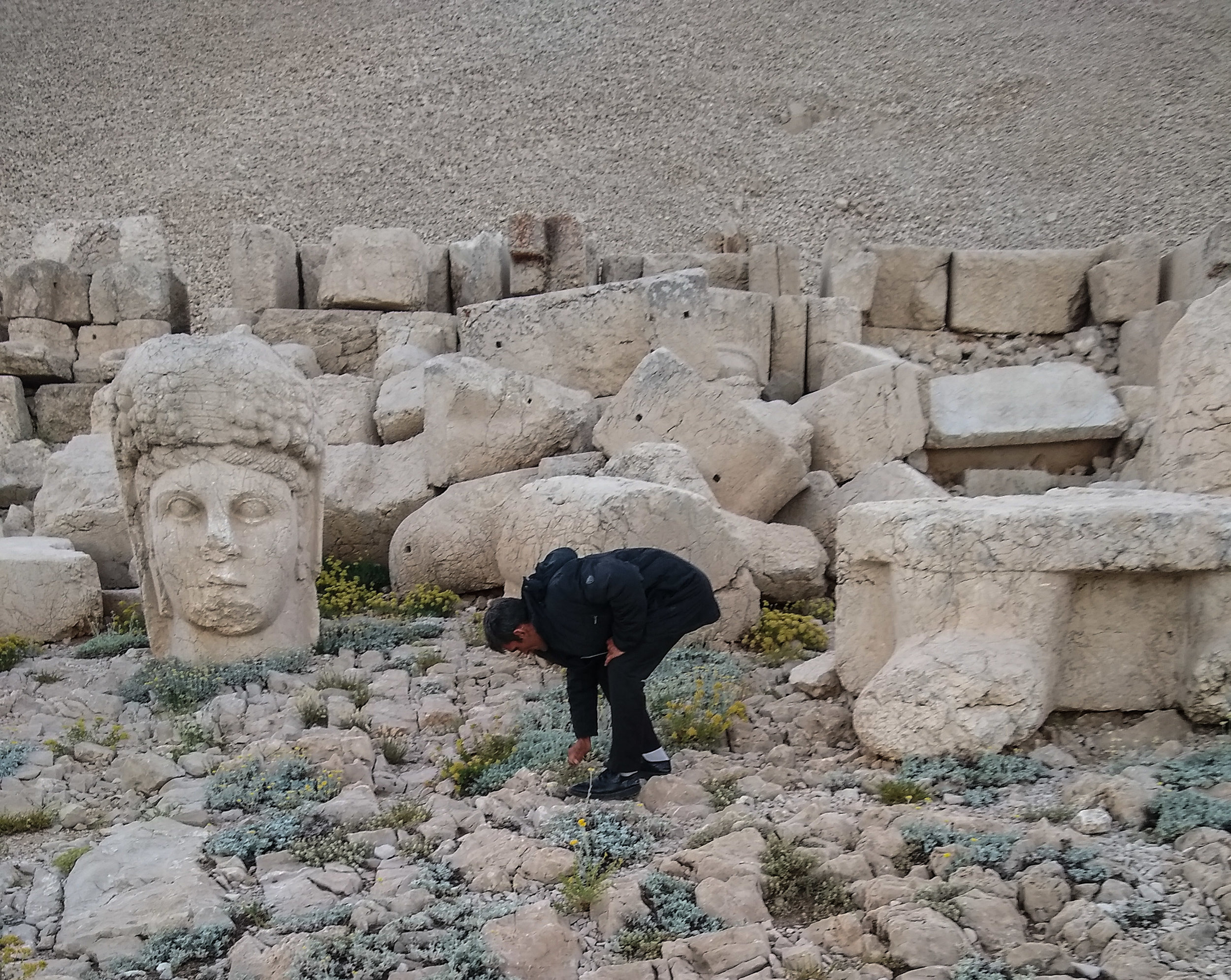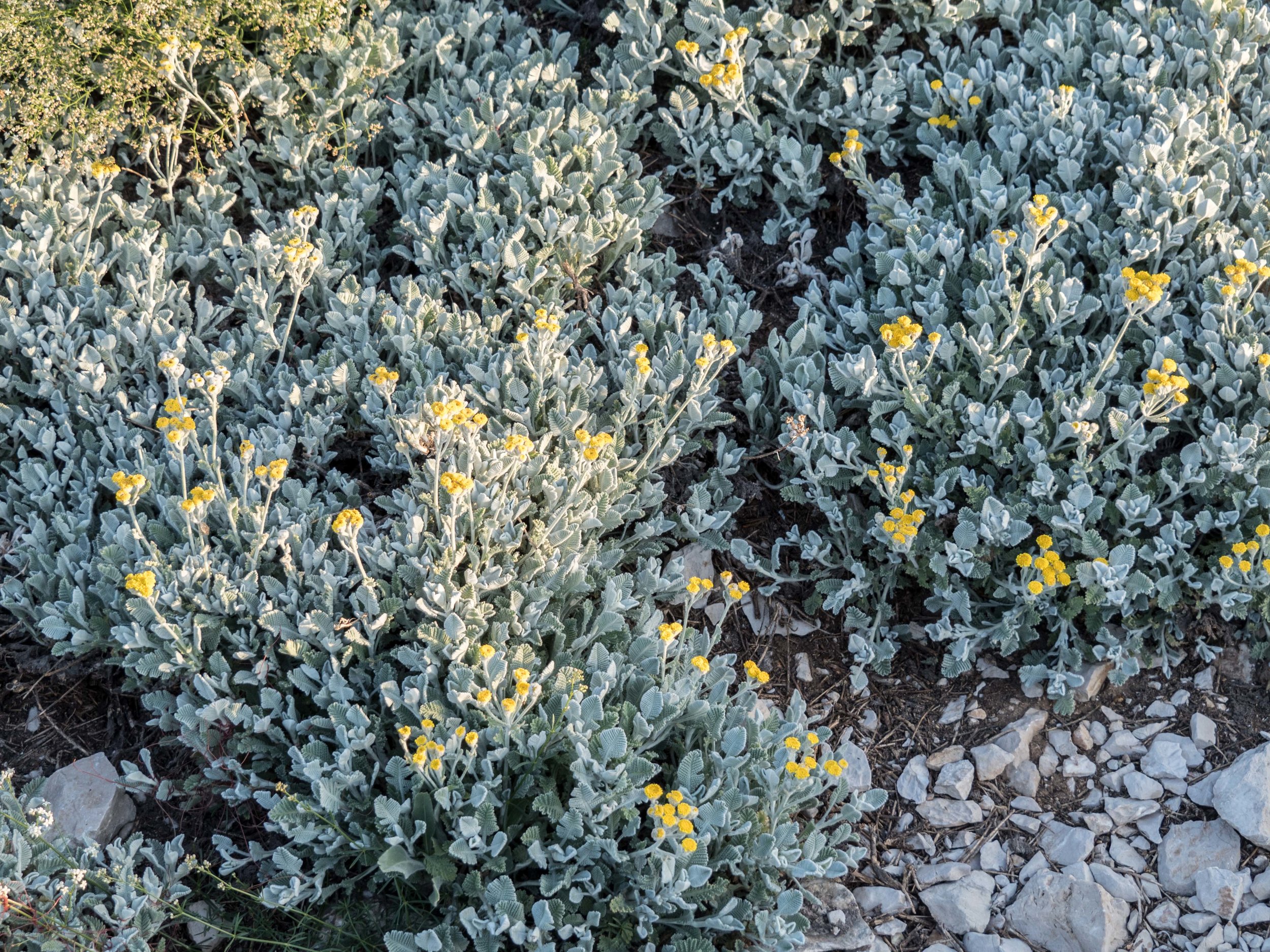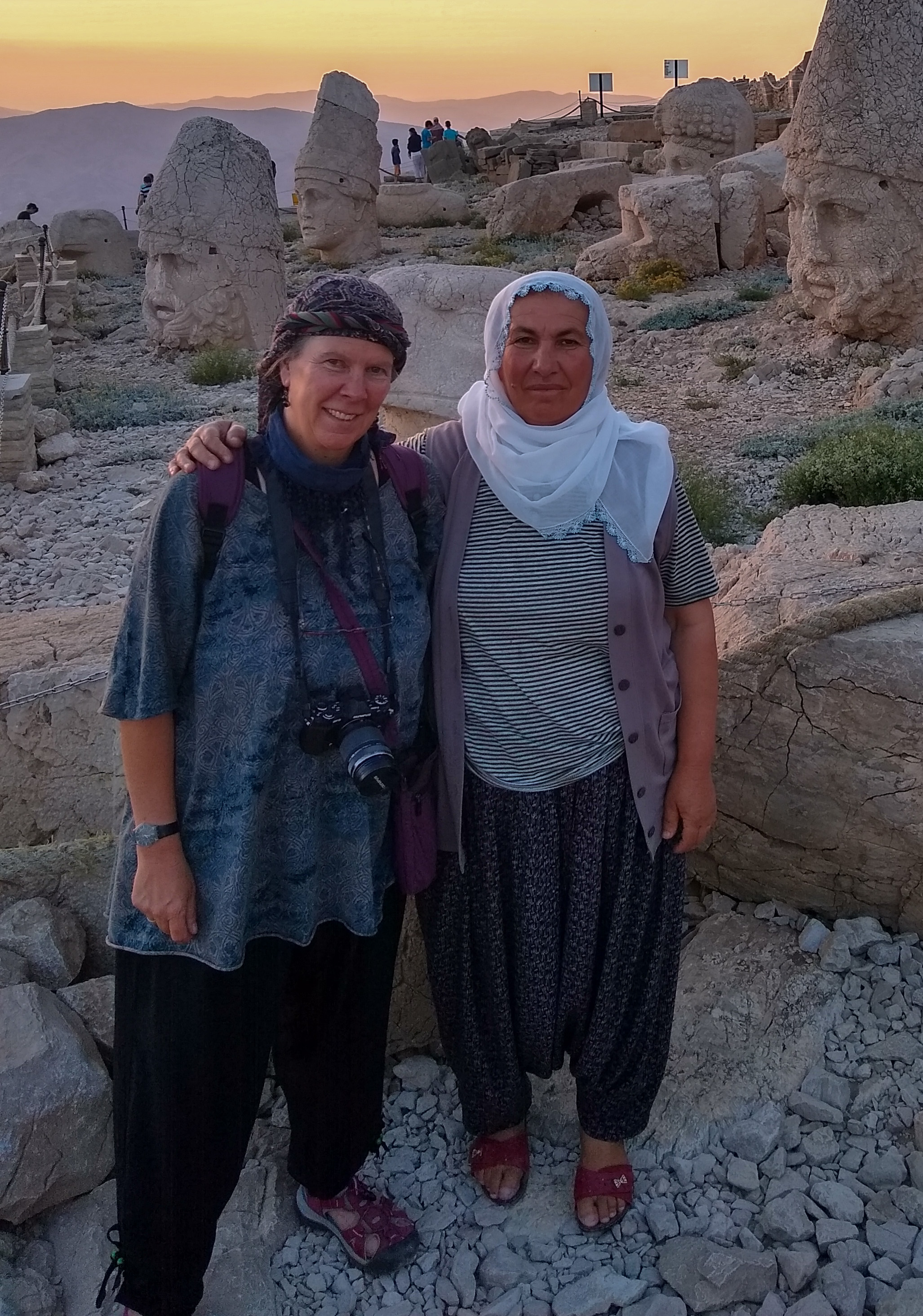Mountains universally attract our attention; and often religious significances are attached to them. I guess it is the presumed proximity to the Gods of whatever pantheon that may be worshiped in the region, that causes our fascination with what is high up.
I am not a fan of mountain climbing, but I have made it a point to seek out some of these special mountains in the world. I have — quite ill-equipped — hiked Mount Fuji which is associated with powerful Kamis from the Shinto Religion. And last year — equally ill-prepared — I surrounded Mount Kailash which is of central importance to Hinduism as the abode of God Siva, Buddhism as a source of good Karma, and the local Bon-Religion.
Mount Nemrut was on my mountain bucket list and was a piece of cake in comparison. It hardly involves any climbing these days as your car or bus can drive up to a nice Visitor Center. And a shuttle bus takes you up to 500 below the peak. The two paths to the top have been paved, steps have been inserted, and only a small rough stretch towards the Eastern platform gives you a bit of an idea of what the climb once must have been. Granted, I huffed and puffed up, and felt my knees coming down, but that is just a sign of being out of shape. Young kids were hopping up the mountain slope like little gazelles… But I was not the only and definitely not the oldest one who took this slowly. Still, no comparison to Fuji or Kailash.
It is unlikely that the local population — who in Antiochus’ I times had to climb up here once every month with offerings and animals in tow to worship their god-king — would have thought of this as a cake walk. It must have taken them a full exhausting day to make it up there. Hopefully, the feast of the slaughtered animals that followed the exhausting walk, the rituals, and the prayers, made up for it.
Antiochus I, whose full name is Antiochus I Theos Dikaios Epiphanes Philorhomaios Philhellen, can only be described as a megalomaniac. As the ruler of the Commagene Kingdom that kept peace at least for a while, between Ptolemaic Rome and the Seleucids, he must have felt quite godlike. His royal and presumed divine birth rights only could have added to his sense of superiority. And as short-lived as the empire was, one wonders if we would remember it or him at all today, if it were not for the three Hierothesions his empire left us. This word was definitely not in my vocabulary before this trip, but all of the inscriptions here, refer to these monuments as Hierothesion which in ancient Greek means “Sacred Seat”.
Arsameia, in the Khata Valley, was a hierothesion for Mithridates I. The Karakus Tumulus I visited, was erected by Mithridates II for his royal females, and Mount Nemrut is the most impressive hierothesion of all, built by Antiochus I for himself. And here, the word makes the most sense. Antiochus literally placed himself on a throne on top of the mountain, lining up gods and dignitaries, power symbols and mythological figures to either side of himself.
Mount Nemrut consists of a 50 meter (once 75 meter) tumulus of gravel just like the Karakus Tumulus. Just here, you wonder how on earth he got tons and tons and tons of rocks up that mountain… Interestingly, archaeological ground explorations have revealed no burial chambers, no treasures, no nothing at all. Was he just pretending? Where is his real grave? Or did he dig so deep into the mountains, that we just have not found anything yet?
The setup of the mountain is quite interesting as Antiochus doubled up the enthroned line of figures on two terraces, an Eastern Terrace and a Western Terrace. Altars and reliefs rounded out the area. Nothing was build in the South. The North shows remains of an altar.
Today, the Eastern Terrace is the one that has the best preserved thrones. Almost all the heads are broken and fell off their shoulders. Unfortunately, they have been lined up in a somewhat artificial line rather than being left in their natural stages of decapitation. This terrace is the focal point for the 4 am sunrise.
The Western Terrace is perhaps the more famous one as the heads are preserved better and are left in a less orderly arrangement. Despite the missing thrones and bodies — a lot of rocks on the ground are the evidence for their existence — the heads are more fun to look at here. This terrace is the focal point for the 8 pm sunset.
I figured that once I came this far, I had to climb the mountain twice: last night at sunset and this morning at sunrise. It was worth it!
Of course you find yourself in the midst of a lot of other sun-worshippers and the experience is less one of solitude or romance but more one of a dedicated tourist community, sprinkled with a few hard-core photographers who make use of the best light during these times. I guess, I was a bit of both.
Again, the photos can not do full justice to the feeling you have when you stand on top of the highest mountain of the region, looking at these gigantic heads, feeling the sun (and the ice cold in the morning) and the heavy winds, and just wonder what someone was thinking who was possessed by the urge to spare nothing, to be immortalized up here and in this way. I had seen many images of Mount Nemrut before. But, there was that “wow” effect that I only got being here.
After a nice breakfast at the Pension, Masoud drove me back to the Sanliurfa airport. Good bye Nemrut.
Back to Istanbul I go, for a few days of a work break. See you there.
P.S. Since I showed up twice (for sunset and then for sunrise) and was traveling alone, one of the guards took a shine to me. On the second day, he picked thyme for me, a very nice smelling bunch. In the olden days people would burn thyme as part of their rituals.
